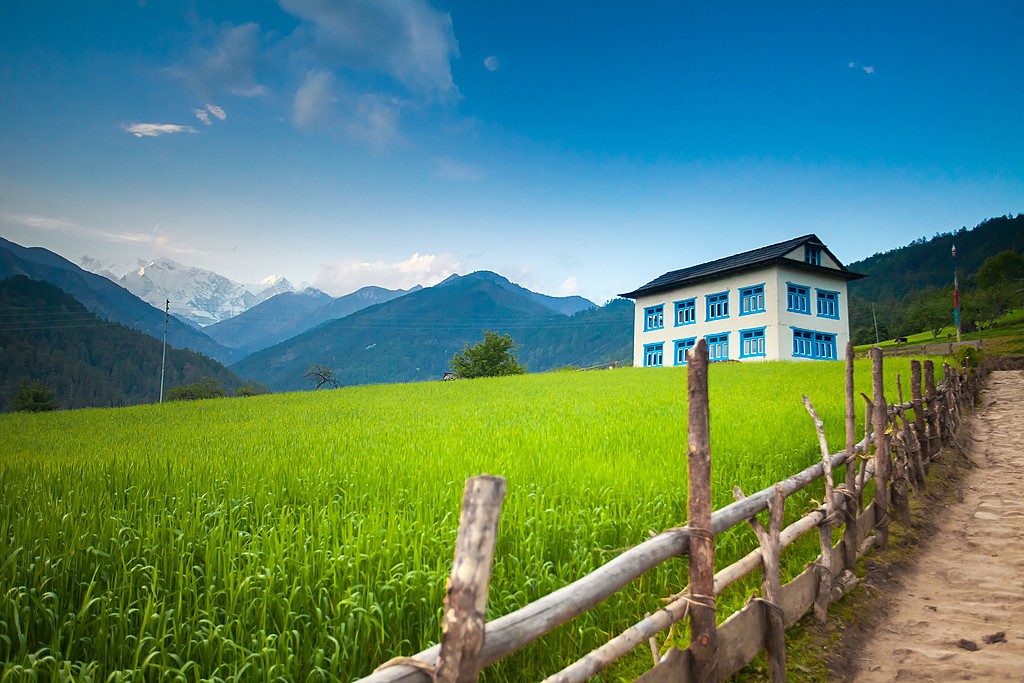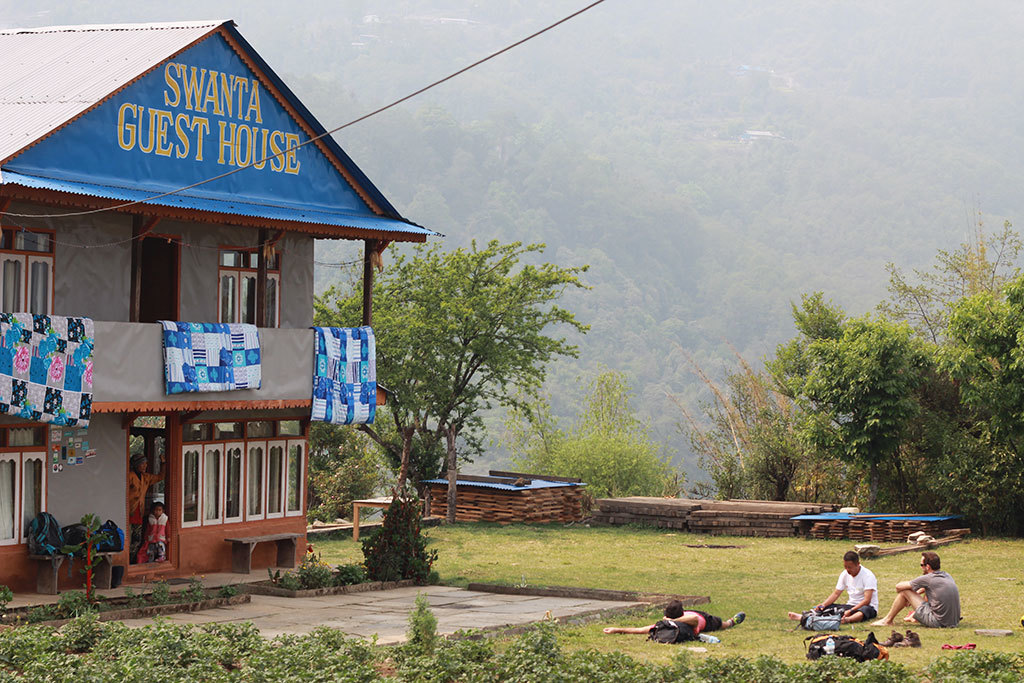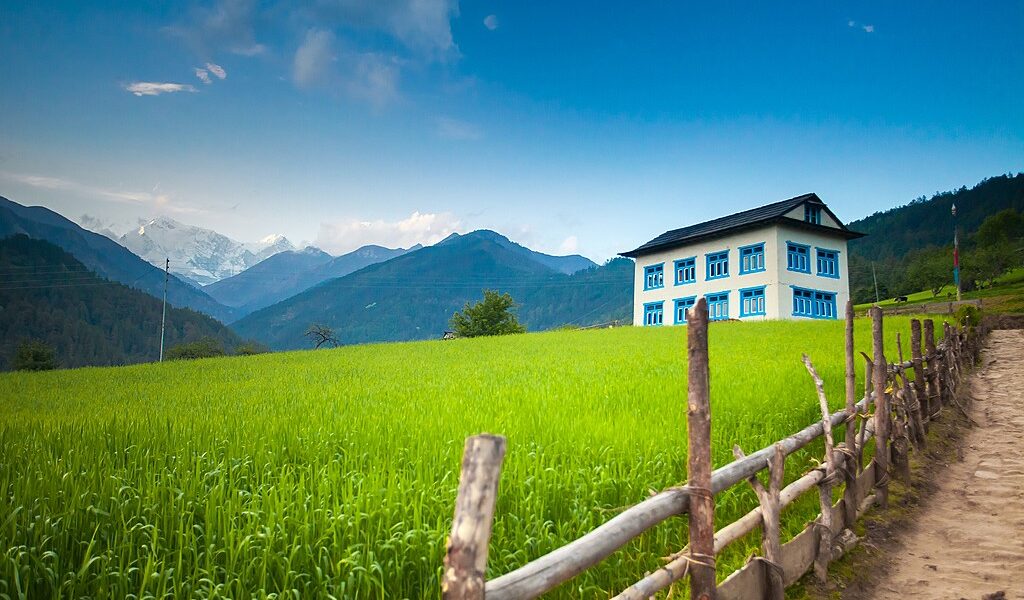
Most treks in Nepal are ‘teahouse’ treks, which means every night you end up at a simple lodge with basic rooms and a meal. The best thing about teahouse trekking – you only have to carry very minimal gear.
Teahouse trekking represents a unique and immersive way to experience the breathtaking landscapes of Nepal. This style of trekking involves staying in locally-run lodges, known as teahouses, for each night of your journey. Fortunately, almost all of the main trekking routes in Nepal are well-equipped with these teahouses, making it incredibly convenient for trekkers. This allows you, the traveler, to embark on your adventure with a minimal amount of gear, freeing you to fully enjoy the stunning scenery and cultural encounters that await. Instead of carrying heavy camping equipment, you can rely on the comfort and hospitality offered by these mountain establishments.
The term “teahouse” encompasses a wide range of accommodations, varying significantly in size, comfort, and construction. In some regions, like the Solu Khumbu, you might encounter large, comfortable, and well-built lodges. These establishments often feature spacious common areas, offering a welcoming space to relax and socialize with fellow trekkers. However, in other, more remote areas, a teahouse could be a more rustic affair. Picture a small bamboo hut nestled within the forest, clinging to a steep hillside. Regardless of their differences, each teahouse provides a vital service to trekkers, offering shelter, food, and a sense of community in the heart of the Himalayas.
## **What is a Teahouse?**
Teahouses, while sharing a common purpose, exhibit slight variations from region to region, reflecting the local building materials and cultural nuances. However, most adhere to a basic architectural design. Typically, you will find simple structures constructed from stone and wood, or sometimes just basic huts. These buildings invariably include a kitchen, where delicious meals are prepared; a communal eating hall, serving as a central gathering point; a shared bathroom area; and a number of basic bedrooms. These bedrooms are usually equipped with two single beds, providing a comfortable place to rest after a long day of trekking, along with a small table.
While many teahouses are purpose-built specifically to cater to the needs of trekkers traversing these majestic trails, some, particularly those in the more remote and isolated regions of Nepal, serve a dual purpose. They function not only as guesthouses for travelers but also as the family’s private home, offering a unique glimpse into the daily lives of the local people. Staying in such a teahouse provides an unparalleled opportunity to connect with the local culture and gain a deeper understanding of the traditions and customs of the region. These family-run establishments offer an authentic and intimate experience that is hard to replicate elsewhere.
## Private Rooms
When staying in a teahouse, it’s important to have realistic expectations regarding the accommodations.
Expect the rooms to be basic, focusing on functionality rather than luxury. However, cleanliness is generally maintained, ensuring a comfortable and hygienic stay. In some cases, you might have the option to pay slightly more for a room with an attached bathroom, offering added convenience and privacy.
Your room will typically come equipped with a thick blanket, providing much-needed warmth in the cool mountain air. Depending on the temperature, you can choose to use this blanket as a second layer over your own sleeping bag or as your main blanket for the night.
While hot showers might seem like a distant dream during your trek, some teahouses do offer hot bucket showers for a small fee. This can be a refreshing and revitalizing experience after days of hiking. However, keep in mind that water availability can be limited, and the showers might not always be piping hot.
**Insider tip:** For those particularly concerned about cleanliness and hygiene, it’s a good idea to bring your own bed liner or a lightweight sleeping bag from home. Alternatively, you can purchase one in Kathmandu or Pokhara before you begin your trek. These provide an extra layer of protection and peace of mind. In addition, it’s always wise to pack a pair of earplugs. The walls in most teahouses are notoriously thin, and the sounds of other trekkers can sometimes be disruptive.
## **Teahouse Etiquette**
Understanding and respecting the local customs and etiquette is crucial for a harmonious and enjoyable teahouse experience. If your accommodation and meals are included as part of a pre-arranged package trek, then all the arrangements will be taken care of at your teahouse. The only expenses you will likely incur are for personal snacks and drinks, which you will usually be responsible for paying yourself.
In almost all cases, the cost of your room is remarkably affordable, typically around $5 per night. The reason for this low price is that the teahouse owners primarily generate their income from the sale of meals and beverages. Therefore, it’s considered good etiquette, and is generally expected, that you eat all your meals at the teahouse where you are staying. This is a significant source of income for the family, and by supporting them in this way, you are contributing to the local economy and ensuring the sustainability of these vital services.
## **Meals at Your Teahouse**
When it comes to dining at teahouses, you’ll find a surprisingly consistent menu across most establishments. You can expect to find a similar selection of popular dishes, including dhal bhat (a traditional lentil soup with rice), momos (delicious dumplings), pasta, pizza, and various other rice and noodle dishes.
However, it’s important to be aware that some dishes take longer to prepare than others. For example, momos often require more time and effort to make. Therefore, it’s always a good idea to check in advance with the teahouse staff to find out what’s fresh and readily available. This will help you avoid long waits and ensure that you receive a satisfying meal.
To minimize the risk of getting sick during your trek, it’s generally wise to order whatever is fresh and in season. This is often the safest and most flavorful option. Many seasoned trekkers, guides, and porters consistently opt for dhal bhat. It’s generally considered a reliable, healthy, and readily available choice, no matter where you are on the trail.
Generally, the higher you ascend during your trek, the more that meals will increase in cost. This is due to the increased logistical challenges of transporting food and supplies to these remote locations. For example, at Gorak Shep, a settlement located high in the mountains near Everest Basecamp, you can expect to pay significantly more for a plate of dhal bhat than you would in Lukla, which is more easily accessible due to its airport and lower elevation.
## **Wi-Fi & Electricity**
In recent years, many teahouses in Nepal have begun offering Wi-Fi access and charging outlets in their dining halls. However, it’s important to temper your expectations regarding the quality and reliability of these services.
Connection speed and availability can be quite spotty, at best. The internet connection often slows down considerably as more people connect to it, largely due to the use of older routers and limited bandwidth. While some areas, such as the Solu Khumbu region, tend to have better internet connections, especially in Namche Bazaar, don’t expect consistently strong connectivity elsewhere in Nepal.
At most teahouses, you can pay a small fee to charge your electronic devices, typically around $2.50 (Rs. 250). However, power outages are quite frequent in the mountains, so it’s essential to be proactive and charge your devices whenever you get the opportunity. Carrying a portable power bank can also be a wise investment, providing a backup source of power when outlets are unavailable.

B-1808

